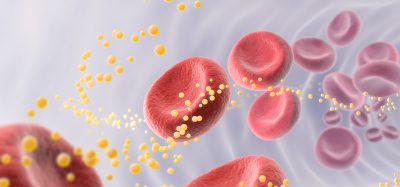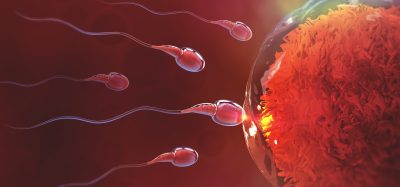A promising new option for male contraception
Posted: 22 February 2024 | Ellen Capon (Drug Target Review) | No comments yet
Scientists have targeted the SMRT-retinoic acid receptor interaction, which could provide a reversible and non-hormonal male contraceptive method.


Scientists at the Salk Institute have discovered a reversible and non-hormonal method of interrupting sperm production. The research points to a new protein complex that regulates gene expression during sperm production, with histone deacetylase (HDAC) inhibitors being able to interrupt the protein complex’s function, blocking fertility without impacting libido.
There are limited options for male contraception. Vasectomies are invasive, and other recent attempts to develop drugs that block sperm production, maturation or fertilisation have not been successful. They either offer incomplete protection or have severe side effects, highlighting the requirement for new approaches. However, sperm development is so complex, it is difficult to identify parts of the process that can be safely targeted.
SMRT-retinoic acid receptor-HDAC complex
Several million sperm cells can be produced per day, as sperm stem cells continuously renew until a signal instructs them to differentiate into sperm, in a process named spermatogenesis. The undifferentiated spermatogonia form spermatozoa once entering the differentiation pathway because of the direct action of retinoic acid (RA).1
Biomarkers are redefining how precision therapies are discovered, validated and delivered.
This exclusive expert-led report reveals how leading teams are using biomarker science to drive faster insights, cleaner data and more targeted treatments – from discovery to diagnostics.
Inside the report:
- How leading organisations are reshaping strategy with biomarker-led approaches
- Better tools for real-time decision-making – turning complex data into faster insights
- Global standardisation and assay sensitivity – what it takes to scale across networks
Discover how biomarker science is addressing the biggest hurdles in drug discovery, translational research and precision medicine – access your free copy today
For this to work, the researchers discovered that retinoic acid receptors must bind with the silencing mediator of retinoid and thyroid hormone receptors (SMRT) protein, which recruits HDACs. This complex of proteins goes on to synchronise the expression of genes that produce sperm.
In the past, other research groups have attempted to stop sperm production by directly blocking retinoic acid or its receptor. However, retinoic acid is crucial for multiple organ systems, like the cardiovascular system. Also, it has long been recognised that RA is a key regulator of the development of the respiratory system: in embryogenesis, RA signalling is involved in developing the trachea, airways, lungs and diaphragm, and it continues to impact respiratory health in postnatal life.2 Consequently, blocking RA can lead to side effects which have prevented the production of viable drugs.
Therefore, senior author of the new study Dr Ronald Evans, professor, director of the Gene Expression Laboratory, and March of Dimes Chair in Molecular and Developmental Biology, and his team, explored whether they could modulate a molecule downstream of retinoic acid to produce a more targeted effect. They first investigated a line of genetically engineered mice in which the SMRT protein was mutated and did not bind to retinoic acid receptors. Without the SMRT-retinoic acid receptor interaction, the mice could not produce mature sperm, but they did show normal testosterone levels and mounting behaviour, indicating their libido was unaffected.
The researchers then treated normal mice with MS-275, an oral HDAC inhibitor with FDA breakthrough status, to observe whether they could replicate the genetic results with pharmacological intervention. The drug, by blocking the activity of the SMRT-retinoic acid receptor-HDAC complex, successfully prevented sperm production without producing obvious side effects.
Maintaining genomic integrity
Notably, within 60 days of not taking the drug, the animal’s fertility was completely restored and subsequent offspring were developmentally healthy. The authors commented that their strategy of inhibiting molecules downstream of retinoic acid is key to achieving this reversibility.
Co author Michael Downes, who is senior staff scientist in Evan’s lab, elucidated: “It’s all about timing…When we add the drug, the stem cells fall out of sync with the pulses of retinoic acid, and sperm production is halted, but as soon as we take the drug away, the stem cells can reestablish their coordination with retinoic acid and sperm production will start up again.”
This method does not damage the sperm stem cells or their genomic integrity. When the drug was present, the sperm stem cells continued to regenerate as stem cells and when the drug was removed, the cells regained their ability to differentiate into mature sperm.
Dr Evans commented: “Most experimental male birth control drugs use a hammer approach to blocking sperm production, but ours is much more subtle…This makes it a promising therapeutic approach, which we hope to see in development for human clinical trials soon.”
This study was published in the Proceedings of the National Academy of Sciences (PNAS).
References
1 Griswold MD. Cellular and molecular basis for the action of retinoic acid in spermatogenesis. Journal of Molecular Endocrinology [Internet]. 2022 October 11 [2024 February 22]; 69(4). Available from: https://doi.org/10.1530/JME-22-0067
2 Chen F, Marquez HA. Retinoic Acid Signaling and Development of the Respiratory System. In Asson-Batres M and Rochette-Egly C (eds) The Biochemistry of Retinoid Signaling III. Subcellular Biochemistry, vol 95. Springer, Cham, 2020. [2024 February 22] Available from: https://doi.org/10.1007/978-3-030-42282-0_6
Related topics
Drug Targets, Gene Therapy
Related conditions
Male infertility
Related organisations
Salk Institute
Related people
Dr Ronald Evans (Salk Institute), Michael Downes (Salk Institute)








